Summaries
Biographies
Artwork
Photographs
7-in-1 Search Engine
SEND EMAIL
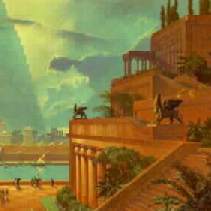 |
Hanging Gardens of Babylon Iraq No one knows for sure who built the Hanging Gardens. The most popular account is that King Nebuchadnezzar constructed the terraced Hanging Gardens in the 6th Century B.C. for his homesick wife who missed the verdant mountain greenery and gardens of her birth place, Media. Others say that a powerful woman named Semiramis built them for her own pleasure. Yet others believe that the Hanging Gardens are myth. Today, only dirt mounds exist, which may or may not be the authentic residue. |
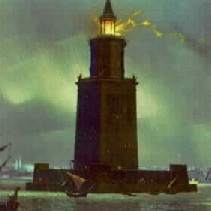 |
Lighthouse of Alexandria Egypt The lighthouse is undoubtedly one of the greatest architectural feats of antiquity. It was at least as tall as a 25 story modern building and stood for over 16 Centuries -- from the mid-3rd Century B.C. to the 14th Century A.D. when an earthquake shook its remaining segments down. Some of its structure survives as stone building blocks for a small on-site castle fortress -- some others lie submerged in the lapping Mediterranean Sea. The Pharros of Alexandria (as the structure is also known) served a useful function -- its burning flame could be seen at night by faraway ships seeking the harbor's shelter. |
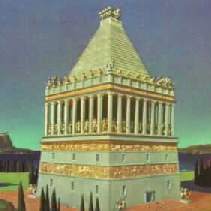 |
Mausoleum at Halicarnassus Turkey Around 350 B.C., a widow built this imposing white marble tomb to exalt her husband Mausoleus, a Persian provincial ruler. Centuries later the building blocks were "borrowed" to erect new structures including a castle. Today, little if anything remains of this once glorious monument in Bodrum (Halicarnassus's current name). King Mausoleus's name, however, lives on in its modern word derivation: Mausoleum. |
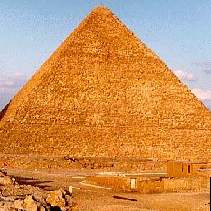 |
Pyramid of Khufu Egypt The Pyramid of Khufu (Cheops in Greek) at Giza is the largest, oldest and only true surviving member the Seven Ancient Wonders. It was meticulously built around 2550 B.C. with 2.3 million stone blocks (most the size of small pickup trucks). The rugged exterior we see today on Pharaoh Khufu's tomb was originally covered by a smooth limestone surfacing (which was subsequently filched by later rulers for use on their own buildings). And, the treasures inside the burial chamber were looted by tomb robbers. No one has any idea what happened to the mummy. Today, the Great Pyramid stands 137 meters (450 feet) high, about 6% shorter than its former height. It's still the tallest of the Great Pyramids and held the world's tallest building title until 1913 when the Woolworth Building was erected in Manhattan. |
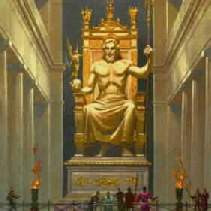 |
Statue of Zeus at Olympia Greece The famed Greek sculptor Phidias created the 12 meter (40 feet) high Statue of Zeus in the mid-5th Century. He depicted the Greek's chief god majestically sitting on his throne. The statue was likely embellished with gold, gems and ivory. Nothing remains of the statue today except for the remarks of ancient writers who saw it. What is believed to be the relief sculptures that adorned the pediments of the marble temple that housed the statue are displayed in the nearby museum in Olympia (where the Olympic Games began several centuries earlier). |
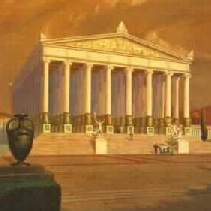 |
Temple of Artemis at Ephesus Turkey The temple honored the Greek goddess Artemis ("Diana" to the Romans). It had gone through various revampments and rebuilding through the years -- and was intentionally burned down twice. Its glory days were the 5th and 4th Centuries B.C. when the structure was ornately decorated and held up by over 100 expertly chiseled marble columns. Nothing verifiable is left at its site in Ephesus. |